
| The ASTRONAUT, August 1937 | FOOTNOTES Page | Obituary Page | |
JOURNAL OF THE M A N C H E S T E R I N T E R P L A N E T A R Y S O C I E T Y
|
[page 2, reverse of cover, left blank]
|
C O N T E N T S
The ASTRONAUT is published bi-monthly. All contributions must be typewritten or in clear handwriting. Neither the Society nor the Editor hold themselves responsible for opinions expressed by contributors. E D I T O R I A L I am sure that readers will agree with me when I say that this issue of the ASTRONAUT is a improvement upon the previous two copies. But there is still room for the journal to ameliorate, and there will be more changes in the October issue. Members will note that the amended Constitution of the Society is included as a supplement to the ASTRONAUT. Separate copies may be obtained on application to the Hon. Secretary, the President or to Headquarters. A new design of notepaper will soon be printed, and will be available as soon as the low stocks of the present notepaper are exhausted. Mr. Burgess has consented to write a series of articles, dealing with the practical applications of the reaction-motor. The first appears on page 7 of this issue, and the second, appearing in the October issue, will be entitled "The Reaction-motor and the Astronomer". I wish to thank Messrs. Burgess, Tozer and Cusack, for their assistance during the publication of the ASTRONAUT. H. T.
|
|
BY J.E.C O W I E The next experiments of Herr J. K. Roberti, after the Aviation meeting at Treport, were planned to take place on September,13th 1935. The rocket planes and sites of intended flights were the "GARROS R.V.5" at Les Barques, "LA MANCHE R.V.6" at Tournant and "BLERIOT R.V.7" at. Sangatto. All letters prepared for the flights have a three line purple cachet, "Eperience Interrompne par ordre du Ministere de l'Interieur", over the stamps. All have a blue and white label showing a rocket plane flying from its stand. The words "Premier vol par Avon Fusee", "Calais 1935" and "Roberti" surround its triangular design. A horizontal green cachet cancels the label on the "GARROS", a vertical orange cachet on "LA MANCHE" and a diagonal red cachet on "BLERIOT". All show the usual rocket plane design. "Vol par avion fusee", names and numbers of the planes, "Vendredi le 13 Septembre 1935" and "Pme-Trouille - Les Barques", etc. On February 9th 1936, the sequence of Roberti rocket plane was broken by the first attempted flight of the American rocket plane "GLORIA". Designed by Herr Willy Ley in association with Mr. F. W. Kessler, the "GLORIA" was an aluminium skinned monoplane, far larger in size than any of the earlier planes. In spite of claims to the contrary, it is asserted that the "GLORIA" was the first liquid fuel plane to be flown for the carriage of mails. The overall length was about 11 feet with a wing span of 14½ feet. The wings were fixed to the top side of the fuselage near the centre and were of equal chord throughout their length, with square cut tips. Two horizontal and a vertical oblong fin were fitted on the tail. The mail compartment was in the hinged nose and the liquid oxygen and alcohol tanks directly behind, supplying fuel to the small rocket motor projecting from the tail. The flight was to have taken place on February 9th between Greenwood Lake, New York and Hewitt, New Jersey, a catapult apparatus having been erected for the launch. The catapult took the form of a large inclined runway, the plane cradle being drawn to the top by a hawser. Unforeseen technical difficulties and the extremely cold weather prevalent at the time caused a postponement until February 23rd. At last everything was ready. Herr Willy Ley fired the rocket motor by means of a fuse, and the "GLORIA" was launched. The plane rose into a steep climb after leaving the launching apparatus and then fell on to the lake's surface, slid over the ice and took to the air for a second time. A second plane of the same type, afterwards took off directly
|
|
from the ice for a short flight lasting 17.8 seconds. The Langden Engraving Co. of New York prepared special stamps for mails carried, printing them in red and olive green, in sheets of four on thin Bank paper. The stamps, showing a rocket plane in flight, of a different design to that used, were sold at 50¢ and 75¢ respectively. Special postcards and envelopes were issued, the postcard showing a photograph of one of the planes in flight, the words "First American rocket airplane flight, Greenwood Lake N.Y. to Hewitt N.J." appearing underneath. Postcards carried have a 50¢ red and a 1¢ U.S. stamp; envelopes have the olive green 75¢ and a 16¢ special delivery stamp for payment of postage and rocket plane fees. A purple or green map cachet, lettered as for the postcards and dated February 9th cancels the special stamps, a Hewitt N.J. postmark cancelling the postage stamps. The latest flight for the carriage of mails was made by Herr Roberti's plane "ALBERTINE R.V.8" on June 4th 1936. This plane, the largest constructed by Herr Roberti, had an overall length of 1.65 metres and a wing span of 1.8 metres. The loaded weight was 3 Kgs., divided equally between the structure, rocket motors and mail carried, specially light materials beIng used in the plane's construction. The flight again took place at the Albert Plage, starting at Duinbergen. In pIace of the usual launching slide a small catapult installation
THE "GLORIA". was used for the plane's take-off. Fired by Herr Roberti, the "ALBERTINE" made a perfect take-off and was flying towards Knocke, when the two wing motors were seen to break loose from the plane. With a turn to the left, the fuselage dropped into a boulevard near Knocke-Zoute, the rocket motors continued their flight until their fuel was exhausted, when they fell several miles away. Two special cards bearing the name of the Belgian Rocket Society were issued. Each shows a rocket plane of the normal R.V.4, type and an inset photograph of Herr Roberti. One has the inscription "The Dutch Inventor Charles Roberti with his Rocket Airplane Type R.V.4 flying"; the other "M. Charles Roberti Inventeur de l'avion fusee, vitesse 1500 Km. par heure, type R.V.4. en plein vol, Grandeur 1.75m". Envelopes with the same photograph in purple, initials B.S.F. and date Juin 1936, were also issued. One card has an orange cachet lettered in Dutch: "Deze Kaart Versond lk Met Mun Raketvliegtuig "ALBERTINE" St.1 No...... R.V.8, Karel Roberti. (This card has been carried
|
|
Apart from planes used for the carriage of mails, the only other rocket planes appear to be the Espenlaub tailless rocket planes. The planes are similar to the Westland Hill Pterodactyl aeroplane, and from an aeronautical viewpoint, offer a cheaper method of testing tailless-wing formations than building a complete aeroplane. The rocket motor is slung between the two wings, which sweep back toward their tips. Each wing tip carries a large elevator on its trailing edge, making the rocket planes the only ones constructed with controllable aero foil surfaces. There is a small stabilizing fin above each wing. The machines are towed to a fair height by aeroplane and then the rockets are fired. One released at a height of sixty feet covered a distance of 1¼ miles. Herr Sander and Herr Espenlaub are continuing their experiments at Wessermünde. Unfortunately, there is a tendency for disputes to arise as to the claims of the inventors carrying mail, the criticism of Herr Roberti's flights being that some of them were in the nature of private experlments, and the mail carried had not an official character. This does not, however, affect his clalms from an aeronautical point of view. This criticism cannot apply to the German flights as the carrying of mails on German rocket flights was prohibited by 1936. After the ”ALBERTINE" flight, Roberti informed press representatives that he intended continuing his experiments with a view to realising his ambition of building a rocket plane which would fly the Channel, but that no mail would be carried during the experiments. THE REACTION-MOTOR AND THE METEOROLOGIST - By E. BURGESS. (Continued from Page 8.) I have now reached the end of this article, but I do not wish the reader to assume that the uses of the reaction-motor to the meteorologist also end here. There are many more known uses, and probably innumerable more unknown to us at present. All I wish to do, is to reply to those persons, who on hearing of a new idea, invariably say: "It's quite a good idea, but what use is it ?". To the enlightenment of such persons I therefore dedicate this series of articles dealing with the use of the reaction-motor.
|
|
THE REACTION-MOTOR AND THE METEOROLOGIST By E. BURGESS In this series of articles I am attemptlrig to make clear to readers, the enormous possibilities of the reaction-motor. Its innumerable uses extend through the branches of civilisation. It is impossible for me to write of all those uses, for in the first place they would take up too much space, and secondly, I do not profess to know of them all. This fIrst article deals with tbe meteorologist and the benefits that he will obtain from the application of the reaction-motor to his science. . . . . . . . . . . . . The first use is not one of the so-called 'impossible' applications, but is quite feasible even at the present day. Professor C. V. Boys invented a rotary camera by means of which a number of photographs of a single flash of lightning can be taken easily and quickly.* The only difficulty is to expose the camera when the flash occurs. Professor Boys suggested a method of accomplishing this. His idea is to produce the flash at a given time by means of a reaction driven projectile. This projectile could be propelled by one or two pounds of powder fuel into the thunder cloude, and the lightning, it is thought, would pass down to earth guided and assisted by the particles of burnt fuel left between the cloud and the ground. This would facilitate better lightning photographs, and our knowledge of the phenomena would be greatly added to. . . . . . . . . . . . . The prognostication of British weather is, as most people know, a very difficult task. This country lies between the high pressure area round the latitude of the Azores and the low pressure area round the latitude of the Arctic Circle. It is consequently subject to the onslaught of the south westerlies, which blow across the Atlantic before encountering Europe. *See "British Thunderstorms 1934."
SIX FUNDAMENTAL SHAPES OF ISOBARS, SHOWING CYCLONES AND
|
|
These winds however, have many eddies and whirls, caused partly, according to some authorties, by the current of air in the westerly wind-belt rubbing against the cold north polar front. These eddies and whirls are known as cyclones or "lows" and anticyclones or "highs". A cyclone or "low" is a region of low pressure with winds moving spirally inwards. The weather accompanying the cyclone is generally wet and stormy, cool in summer but "muggy" in winter. Anticyclones, as their name implies, are opposite to cyclones. They are regions of high pressure with the winds moving spirally outwards. The typical anticyclonic weather conditions are fine and dry in summer and frosty, often foggy, in winter. These systems generally move across the Atlantic to the British Isles, and as they are one of the main factors governing our weather, it is necessary that their movements should be known and charted. At present the required observations are taken by vessels crossing the Atlantic, who wireless their readings to the meteorologist. This method however, is unsatisfactory and haphazard, therefore a surer and more reliable one has to be found. This is where the reaction-motor becomes useful. A projectile could be constructed, controlled by radio and travelling at a suitabley fast rate to allow it to make its tour quickly. It would be sent out over the Atlantic and moving along a definite course, could wireless meteorological recordings at definite intervals. A number of such projectiles operating simultaneously would be able to give a reliable chart of conditions over the Atlantic, making it possible for the movements of the cyclones and anticyclones to be accurately mapped.
Some authorities are of the opinion that the solution of our weather problems lies in the upper atmosphere. Meteorologists are, therefore frequently releasing small altitude-balloons complete with instruments for recording the meteorological conditions of the atmosphere through which the balloon passes. When it reaches its "ceiling", the balloon bursts. The fragments of the covering act as a sort of parachute and the instruments fall back to earth. Further precautions are taken to prevent the instruments from being damaged, by enclosing them in a light bamboo framework, called a "spider" to break the shock of the fall. Many of these balloons fall into the sea or on to deserted moorlands and their valuable cargo is consequently lost. A projectile, driven by a reaction-motor and controlled by wireless, would abolish all this haphazard work. It would be able to ascend to a terrific height in a few minutes, and could be brought back to its launching ground with its records safe. . . . . . . . . . . . . Another more distant use of the reaction-motor, is the establishment of communication with the Moon, our satellite. When this is achieved, materials and men could be transported there and a station constructed upon the barren Luna surface. The station could include an observatory, which would be able to train huge telescopes upon the Earth. As the Moon always turns the same face to the Earth, every part of the motherplanet would come under the range of the telescopes each 24 hours. The weather conditions could be observed and their movements charted and wirelessed to meteorologists on Earth, so making weather proyphecy more accurate. Continued on Page 6.
|
|
M A N ' S F I R S T R O C K E T F L I G H T ? We publish the following announcement without comment, and leave our readers to form their own opinions. It appeared in the "SUNDAY REFEREE" for November 5th 1933, and is reproduced by the kind permission of the Editor. "The 'Sunday Referee' is able exclusively to reveal to-day that for the first time in history successful experiments have been made with a passenger-carrying rocket. A trial flight under conditions of the strictest secrecy has just taken place in the Island of Rugen, in the Baltis. Sunday Referee
Special Correspondent, RUGEN. "A sensational secret demonstration of the practibility of the rocket principle applied to flight was made here last Sunday, when Herr Otto Fischer was shot six miles into the air within a 24 ft. steel rocket and returned to earth safe and sound, though shaken.
|
|
"'The next thing that occupied my attention was the tremendous heat of the asbestos floor on which I was standing. The reason was that the rocket had merely been propelled about two hundred feet by the initial explosion, and had been driven the remainder of the distance by rockets in its tail, which had been released automatically at timed intervals.' T H E S O C I E T Y
The Annual General Meeting of the Society took place at Headquarters on Sunday, July 18th at 2.45 p.m. The President commenced by reading the minutes of the last meeting. He then read the amended constitution of the Society and informed members that they would receive copies in due course. Communication received from Mr. P. E. Cleator and M. Esnault-Pelterie, consenting to write an article for a future copy of the Astronaut, were announced, and a request from the Sheffield Astronomical Society for the President to give a lecture on Astronautics. Mr. J. Broadbent then gave a short paper on Explosives, in which he stated that cordite was a probable propellant. A brief history of the Society from its inauguration June 1936 to the present day was given by Mr. Burgess. At the first meeting in June, plans were drawn for a liquid fuel driven rocket, and preparations made for its construction. But on communication with Mr. P. E. Cleator, it was learned that the use of liquid fuels was illegal in Great Britain, so the project had to be abandoned. However, experiments were made with rocket designs using powder fuels. The relic of the first rocket was shown, and the account coloured with extracts from newspaper cuttings. At 4.30 p.m. the meeting was adjourned for light refreshments, being resumed at 5 o'clock. Mr. Harold Gottliffe then took some photos of the members present. He next gave an interesting account of the experiments of the Leeds Rocket Society. Mr. Gottliffe then applied for membership, and was duly elected. The meeting was declared open for general discussion, and terminated at 7.30 p.m. H.T.
|
|
NEW MEMBERS The following members have been elected since the publication of the June issue of the ASTRONAUT :- MEMBERS
ASSOCIATE MEMBERS
NEW HEADQUARTERS Will members please note that Headquarters have been transferred from 683, Ashton New Rd., to 41, Longford Place, Victoria Park, M/cr. The following addresses of officials of the Society, may be of use to members - President - 683 Ashton New Rd., Manchester 11.
Printed and published by the Manchester Interplanetary Society, 41, Longford Place, Manchester 14.
|
|
T H E M A N C H E S T E R I N T E R P L A N E T A R Y S O C I E T Y
- - - - - - - - - - - - - - - - - THE OBJECT OF THE SOCIETY IS :- To forward the science of astronautics for commercial use -----ooooooo----- C O N S T I T U T I O N ( July 1939 ) 1. Membership of the Manchester Interplanetary Society is open to persons of either sex and of any nationality. There are four forms of membership; they are -
2. All subscriptions must be paid by the end of January for each year; or by arrangement with the Treasurer, in quarterly instalments in January, April, July and October. (2/- per quarter for members; 1/4d per quarter for associate members). 3. No subscriptions are returnable. 4. Any member more than six months in arrears with subscriptions shall be assumed to have left the Society. COMMITTEE 5. The Committee of the Manchester Interplanetary Society is to be of six members, elected by the Society each year, namely PRESIDENT, who will preside over the activities of the Society, and be chairman of all meetings at which he is present.
|
|
(2) VICE-PRESIDENT, who will aid the President in the execution of his duties. SECRETARY, who will attend to all communications on behalf of the Society, and prepare minutes of the meetings. JOINT SECRETARY, who will assist the Secretary in his duties, and organise meetings of the Society. TREASURER, who will have charge of the funds of the Society and be responsible to the Society for them. LIBRARIAN, who will be responsible for the safe-keeping of the literature of the Society. 6. Providing that he can prove to the Society that he is capable of occupying more than one of the above positions, a Committee member may take over any other position(s) other than his own, in the event of such positions being left open through the resignation or temporary absence of the original holder(s). 7. The Committee has the sole right to conduct all affairs of the Society, other than research. 8. If the Committee can come to no agreement, the question under consideration must be put to the Society as a whole. 9. Voting, both at General meetings and Committee meetings, is to be decided according to the majority present at the voting. (See Rule 10.) 10. The minimum numbers for voting at meetings are :- General Meeting . . . . . . . . . . 7 Committee Meeting . . . . . . . 4 Research Committee Meeting . . . . 4 RESEARCH COMMITTEE 11. The Research Committee of the Manchester Interplanetary Society, is to consist of members of the Society, who are nominated or deposed by the said Committee. The maximum number of members is to be left to the discretion of the Committee. 12. The Research Committee is to organise research into all matters pertaining to astronautics. LIBRARY 13. The Librarian is in full control of the Library. 14. The borrower is responsible to the Society and the loaner, for the safe-keeping and safe return of any borrowed literature. 15. All literature must be returned on or before the date stated on the form on the back of the book; and in the same condition as it was borrowed. 16. All damage must be fully repaired, or the book returned to the Library for repair; the invoice being forwarded in due course. If a member loses a borrowed volume or pamphlet, then it must be replaced or the monetary value forwarded to the Librarian. 17. In the case of a member not returning a borrowed book, on or before the date stated, a fine of 1d per week or part of week will be incurred. 18. No literature may be taken from the Library without the consent of the Librarian.
|
|
(3) 19. No literature is to be passed from member to member. 20. Non-members of the Manchester Interplanetary Society cannot borrow literature under any circumstances whatever. 21. Members must pay postage on all borrowed books. 22. The borrowing of any literature will be taken as acceptance of these rules. DATES OF MEETINGS FOR THE REST OF 1937: GENERAL MEETINGS
COMMITTEE MEETINGS Sunday September 26th 6.30p.m. Monday December 27th 6.30p.m. RESEARCH COMMITTEE MEETINGS
OFFICIALS OF THE SOCIETY
RESEARCH COMMITTEE E. BURGESS, W. HEELEY, S. DAVIES, T.CUSACK, H. TURNER. The Society will accept no responsibility for experiments made without the written approval and consent of the official Research Committee.
STOP PRESS
E.B.
| |||||||||||||||||

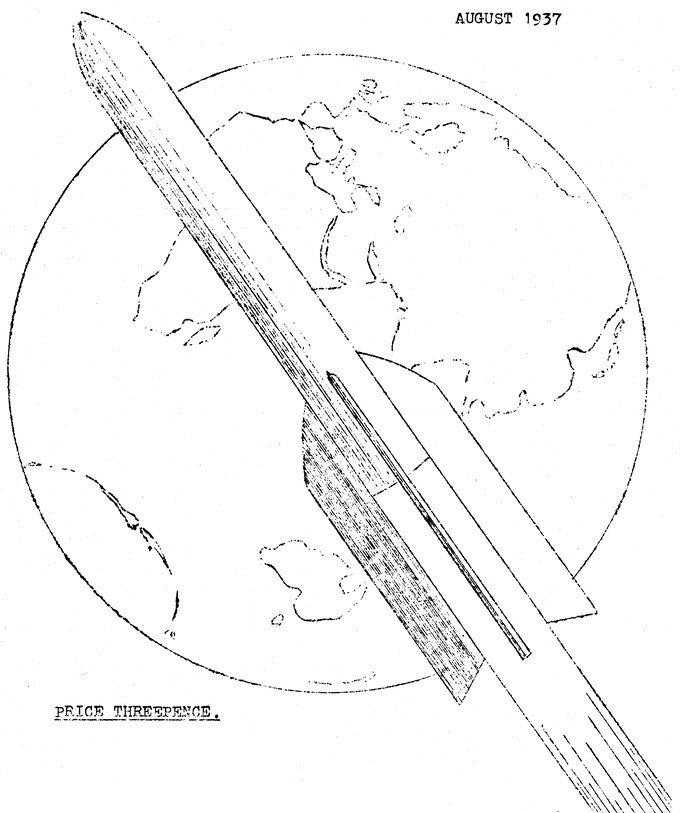
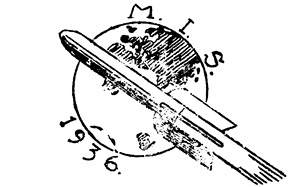

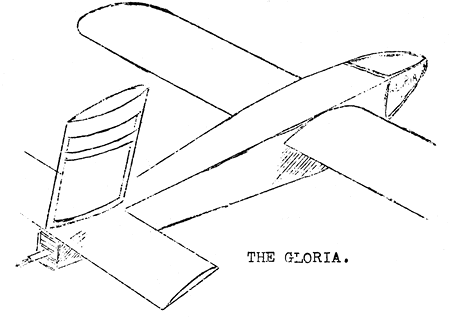
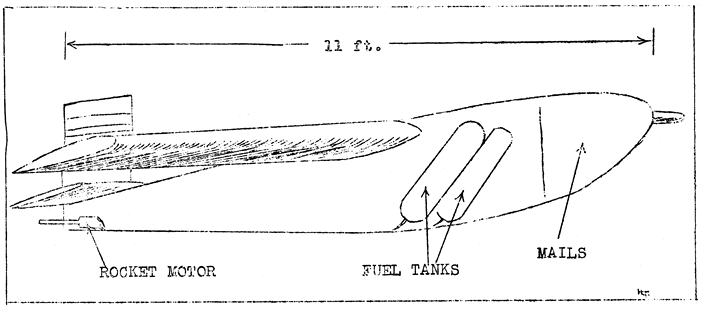
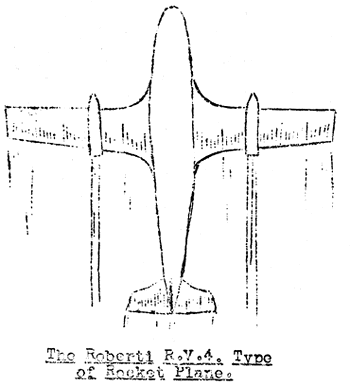 by my rocket aeroplane "ALBERTINE R.V.8") and a representation of the rocket plano and autograph K. Roberti. Red cachets of a similar type were applied to the remainder of the mail, in French or Dutch, "letter" replacing the word "card" for the envelopes. Dutch lettered mail also bears a black circular cachet dated "4 Juni 1936; Albert Plage - Raketvluchten". The French mail has the cachet in purple "Albert Place 4 Juin 36 Poste par Fusee", and the Knocke-Zoute postmark dated "4.VI.18.19. 1936".
by my rocket aeroplane "ALBERTINE R.V.8") and a representation of the rocket plano and autograph K. Roberti. Red cachets of a similar type were applied to the remainder of the mail, in French or Dutch, "letter" replacing the word "card" for the envelopes. Dutch lettered mail also bears a black circular cachet dated "4 Juni 1936; Albert Plage - Raketvluchten". The French mail has the cachet in purple "Albert Place 4 Juin 36 Poste par Fusee", and the Knocke-Zoute postmark dated "4.VI.18.19. 1936".
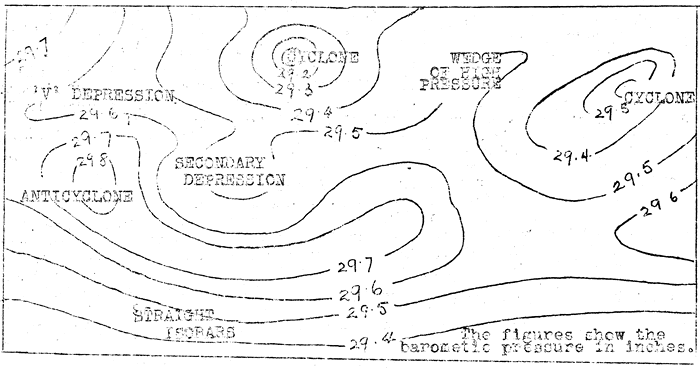
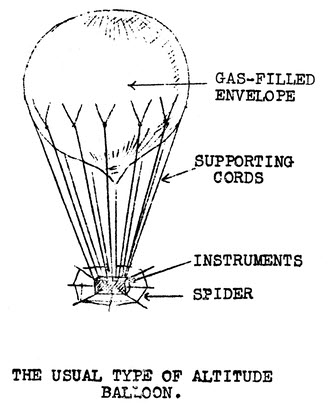 . . . . . . . . . . . .
. . . . . . . . . . . .
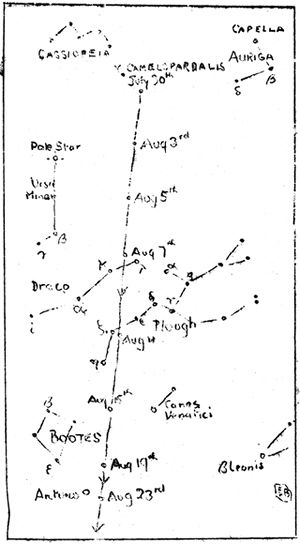
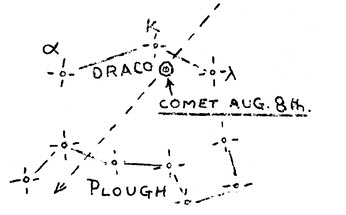 On August 8th at 0.30 a.m. B.S.T., Finsler's Comet was visible to the naked eye, being as bright as K Draconis. In a 3" refracting telescope (magnification 80X) the nucleus was as large and much brighter than the great Nebula in Andromeda. It had a tail extending in the north-following direction about 3 times the diameter of the head, when it became indistinguishable in the 3". The comet was a little south of the position shown on the map on page 11 of this issue of the ASTRONAUT.
On August 8th at 0.30 a.m. B.S.T., Finsler's Comet was visible to the naked eye, being as bright as K Draconis. In a 3" refracting telescope (magnification 80X) the nucleus was as large and much brighter than the great Nebula in Andromeda. It had a tail extending in the north-following direction about 3 times the diameter of the head, when it became indistinguishable in the 3". The comet was a little south of the position shown on the map on page 11 of this issue of the ASTRONAUT.
